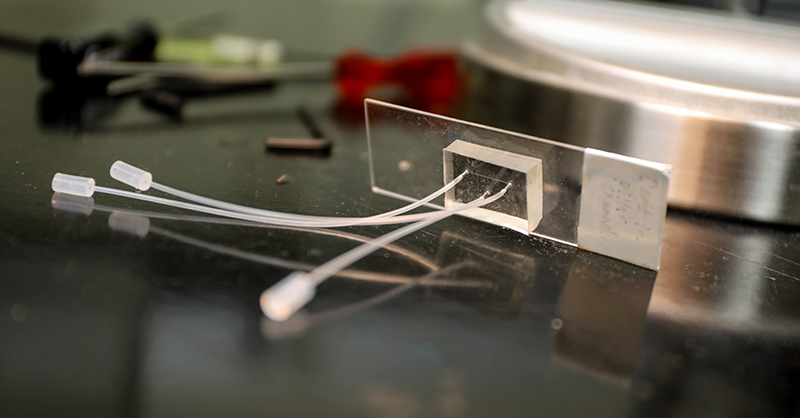
Oregon Health & Science University (OHSU) is stepping onto the global stage as part of a groundbreaking international initiative aimed at revolutionizing disease modeling through artificial intelligence. This ambitious project focuses on developing and enhancing lab-grown systems, such as “organs-on-a-chip,” to deepen the understanding of diseases and expedite the creation of new medications.
The initiative, with a substantial budget of £15.9 million (over $18.4 million), is a collaborative effort funded by the Medical Research Council, Wellcome, and Innovate UK. Based in the United Kingdom, the project encompasses diverse research areas including the liver, brain, cancer, pain, and blood vessels.
“OHSU is proud to be part of this new initiative that leverages the promise of artificial intelligence to advance the health of people here in Oregon and around the world,” stated OHSU President Shereef Elnahal, M.D., M.B.A. “Decades from now, we will look back at this era as an inflection point in the advancement of new tools to improve treatment of disease.”
OHSU’s Role in Blood Vessel Research
At the heart of OHSU’s involvement is the study of blood vessels, led by Owen McCarty, Ph.D., the Gordon Moore Endowed Chair of biomedical engineering in the OHSU School of Medicine. McCarty, a chemical engineer by training, will collaborate with the Hull York Medical School in the U.K. to develop lab-grown, artificial blood vessels. These models aim to replicate critical aspects of the human circulatory system, including blood flow, vessel structure, and clot formation.
“Right now, there is just not a good model for bleeding,” McCarty explained. “One of the goals of this project is to study not just blood in circulation, but also to study the vessel wall.”
Over the next few decades, McCarty anticipates these innovative methodologies will enhance existing animal models and potentially eliminate the need for animal testing altogether.
Implications for Cardiovascular Disease Treatment
The international team of researchers aims to develop scalable, adaptable artificial blood vessels to accelerate effective treatments for cardiovascular disease. This condition is responsible for nearly a third of global mortality, with the majority of deaths linked to blood clots in the heart, leading to heart attacks, or in the brain, resulting in strokes.
“Our goal is to build reliable, non-animal methods that are fit for modern drug discovery,” said Simon Calaminus, Ph.D., the principal investigator with Hull York Medical School in the U.K.
McCarty emphasized the critical role of blood as an organ, highlighting its functions in oxygen distribution, infection surveillance, and waste removal through the kidneys. Despite its importance, millions worldwide suffer from the effects of blood clots.
“The goal is to make sure blood doesn’t clot in diseased vessels but also doesn’t leak out in the form of bleeding,” McCarty noted. “Safe drugs to prevent heart attack and stroke must walk this biological tightrope.”
Future Directions and Global Impact
The OHSU and U.K. collaboration is one of five projects under the initiative, specifically focusing on ARTEMIS — ARTificial blood vessels for Thrombosis, Endothelial Modeling and artificial intelligence Simulation. This project seeks to answer complex questions about blood clotting and vessel health, paving the way for safer and more effective treatments.
The announcement of this initiative comes at a time when the integration of artificial intelligence in medical research is gaining momentum. By harnessing AI, researchers hope to unlock new insights into disease mechanisms, ultimately leading to breakthroughs in treatment and prevention strategies.
As this initiative progresses, it is expected to set a new standard in disease modeling and drug discovery, offering hope for millions affected by cardiovascular diseases worldwide. The collaboration between OHSU and its international partners underscores the importance of global cooperation in tackling some of the most pressing health challenges of our time.





